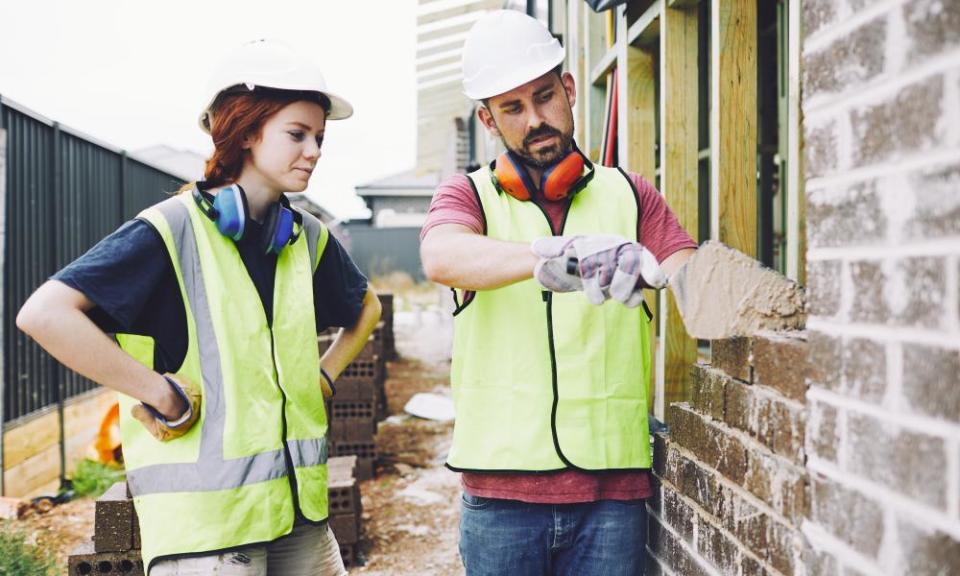Council of the Ageing joins unions in warning jobmaker could harm older workers

The Council of the Ageing has joined unions in arguing youth wage subsidies do nothing to encourage the hiring of older workers and could even cause them to be sacked.
In submissions to a snap Senate inquiry, Australian unions and employer groups have welcomed the intent of the $4bn jobmaker hiring credit but warned it lacks safeguards and may not be enough to get businesses hiring again.
The Council of Small Business Organisations Australia (Cosboa) and the Australian Council of Trade Unions (ACTU) suggested youth wage subsidies may need to be increased, while the Australian Chamber of Commerce and Industry called for the program to be expanded to companies currently claiming jobkeeper.
The program, which proposes subsidies of $200 a week for new hires aged under 30 and $100 a week for those aged 30 to 35, is facing scrutiny after the Treasury revealed it was expected to create just 45,000 “genuinely additional” jobs despite 450,000 workers qualifying for the payment.
Related: ‘Cruel mess’: One Nation puts Coalition on notice over industrial relations
The most common complaints in Senate inquiry submissions were from unions, warning the hiring credit would promote insecure work, and from employers, the Council on the Ageing (Cota) and unions again that more needed to be done to help older workers.
Cota submitted that, although it supported the jobmaker program, it was “deeply disappointed that the other equally vulnerable population group, older workers, are not included in the scheme”.
“Once an older person becomes unemployed, in most cases they find it much more difficult to re-enter employment than younger people,” the council said. “People aged 55–64 years spend on average 36 weeks looking for work until they find employment, compared to 14 weeks for all age groups.”
Although employers have to increase headcount and payroll to receive subsidies, Cota said an employer could “theoretically displace one older worker from their role, and replace them with two part-time/casual younger workers under the scheme”.
“This provides a financial incentive on top of already pervasive age discrimination in Australia,” it said. “Proper safeguards must be built into the program to ensure older workers’ jobs are protected.”
Both Labor and the Greens have flagged amendments to the program to address concerns older workers could be sacked to make way for subsidised younger employees.
On Tuesday, Labor’s shadow employment minister, Brendan O’Connor, told ABC TV that he does “not quibble with the government focusing on 18 to 35-year-old” workers.
But he said Labor was concerned the scheme wasn’t “properly regulated”. The opposition wants to know what will prevent people over the age of 35 losing their hours or jobs and being “displaced” in favour of those eligible for subsidies.
In its submission, the Treasury claimed that existing laws prohibiting unfair dismissal and age discrimination would prevent employers from sacking older workers.
The Treasury also revealed employers are expected to hire young people before the formal rules for the program are written – because it will consult “with a view to the rules being settled” before they claim subsidies retrospectively after the first quarter.
Cosboa submitted its members believed the hiring credit was “too low” and needed to be “at least 50% higher” to reduce unemployment by 450,000.
The small business lobby group warned the $100 rate for those aged 30-35 was “too low to motivate small business owners to recruit a new, eligible worker”.
“The focus on younger workers may result in unintended negative consequences for recently unemployed mature-aged workers,” it said.
The Australian Chamber of Commerce and Industry in its submission said the hiring credit was a “welcome, practical measure to help address rising youth unemployment” but disagreed with the fact employers receiving jobkeeper wage subsidies are not eligible.
“This flies in the face of businesses that are in the restart and recovery phase where they will be starting to ramp up their businesses from a low base,” it said.
Related: I got a new job in Melbourne's lockdown, then lost it, and all on Zoom | Aleksandra Bliszczyk
By using 30 September as the reference date for employee headcount, the jobmaker program could exclude employers whose “payroll would have gone down at that time” due to cuts to jobkeeper. The chamber proposed using a three-month average instead.
The ACTU warned parliament was being asked to pass the jobmaker hiring credit on “the basis of limited detail and trust” because none of the program’s safeguards were contained in legislation.
The treasurer will have discretion to change the program until October 2022, a period that includes “the forthcoming election period and extends beyond even the most pessimistic estimates of when normal parliamentary functioning will have resumed”, it said.
The ACTU submitted the program should have “additional safeguards which actively disincentivise the dismissal of existing staff”.
The peak union body warned that because workers are eligible after working 20 hours per week, many would have “insufficient income to cover basic living expenses”. There was no “strong policy basis” for the “arbitrary” cut-off age of 35, it said.
The ACTU warned that total subsidies would amount to $10,000 a year for younger workers or $5,000 for those aged 30 to 35, on par with the Restart subsidy which failed to create the desired number of jobs for long-term unemployed older Australians.
The Treasury argued younger workers had been targeted because in September those aged 15-34 had an unemployment rate of 10.2% compared with 6.9% for the total population.
“Young people have a larger share of working years ahead of them,” it said. “The long-term economic costs of becoming disconnected from the labour market is, therefore, much greater for young people.
“Older workers will generally have more substantial work experience to support them being re-employed.”

 Yahoo Finance
Yahoo Finance 